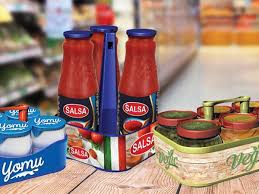
Consumers will pay a small deposit on the LRP when making their purchase. Once they have finished with the items, they simply return the packaging and jars to the store for a refund of the deposit. This process is already automated in many places with a machine that scans the packaging and contents and provides a coupon with a store credit for future purchases.
It is a tried and tested method used for beverage crates today. Those crates can often last up to 30 years and are cycled from brand to store to home thousands of times, saving tonnes of CO2. At the end of their long life, the crates are ground up and turned into new crates for another long-life cycle.
LRPs are the next logical evolution from RRPs and SRPs. They deliver a zero-waste option for many of retailers’ most popular products while maintaining affordability, improving convenience and closing the loop to ensure a circular life cycle. The initial products will focus on jars of non-perishables—such as vegetables, sauces and more—but the technology could be rolled out across many more product lines in the future.
This system has worked successfully with returnable crates for beverages for more than 50 years. It reminds us of the milkman delivering returnable milk bottles. It could work just as well for peas. At DS Smith Plastics we are constantly on the look-out for new innovations, greater sustainability and inspiration. Sometimes you need to look to the past to find the right inspiration.
— Paul Baeyens, Managing Director, DS Smith Plastics
Brands will do much more than simply burnish their sustainability credentials with LRPs. Bulk purchases of four, six or eight items at a time will increase sales while simultaneously lowering handling costs. Marketing departments will love the on-shelf visibility and in the case of a change in branding, or a promotion, the IML stickers can be replaced with the old ones being recycled too.
Retailers can drastically cut the mounds of plastic and cardboard waste that need to be disposed of currently and keeping shelves full has never been easier thanks to the easily handled, stackable containers.
Consumers, already driving the sustainability agenda, will flock to the new solution that promises to drastically reduce CO2 emissions, plastic waste and garages overflowing with one-way wrapping packaging to be recycled.






